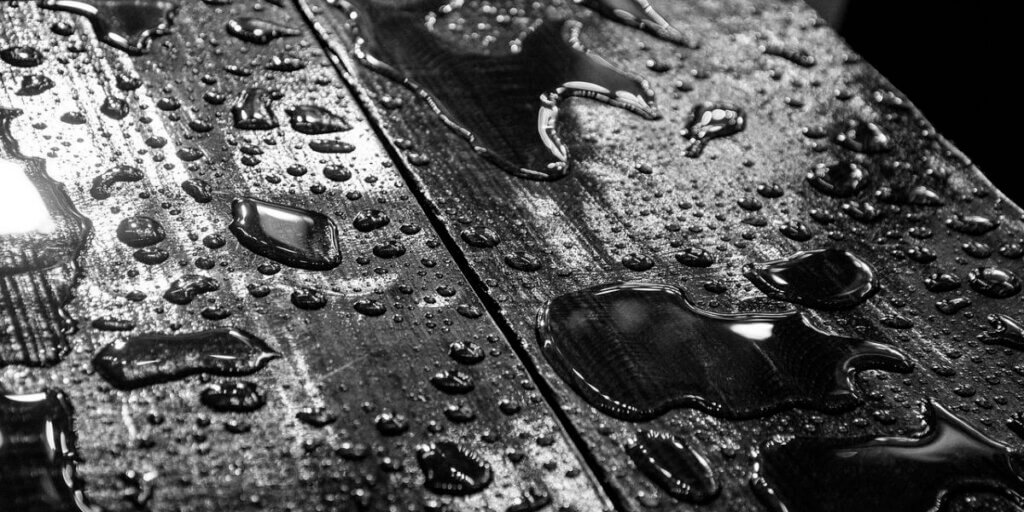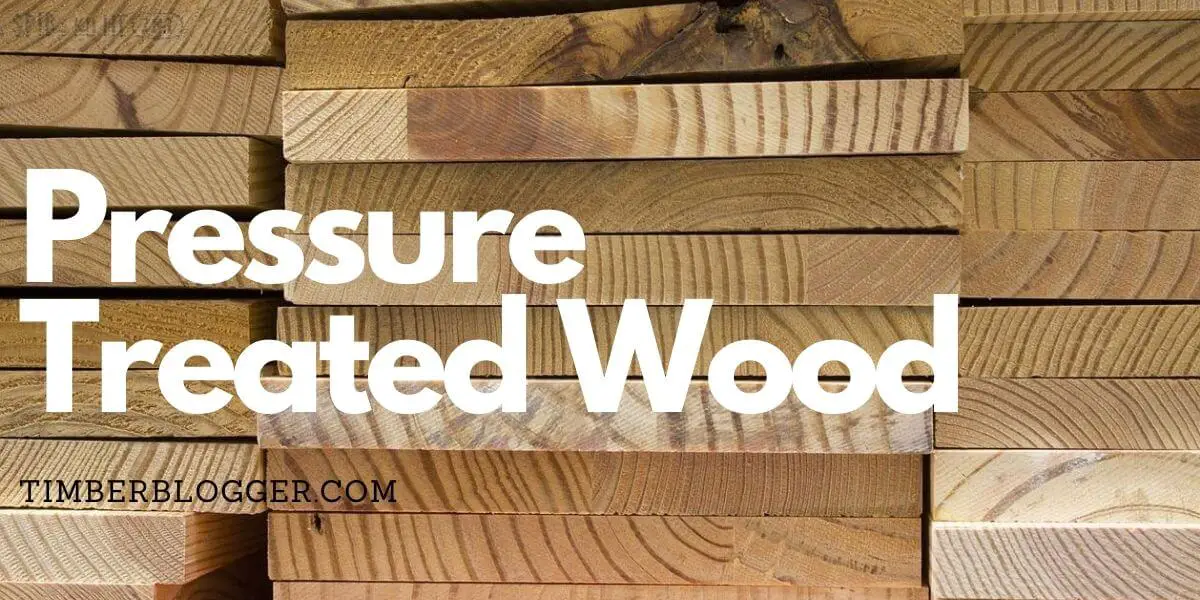Ordinary wood (Untreated wood) that has been chemically treated to resist rot and insect infestation, that type of wood is called treated wood. Treated wood is commonly used in outdoor construction, such as decks, fences, and siding.
Many chemical insecticides are used for wood treatment such as alkoxysilanes, polysiloxanes, colloidal silica, or organically modified silica. There are many different methods for treating wood, and each company has different approaches.
Pressure Treated Wood Uses
Pressure-treated wood is commonly used for outdoor construction projects such as decks, siding, outside stairs, ceilings, fences, and outdoor furniture. But it is also used in interiors such as bathroom doors, kitchen platforms, or flooring.
How Is Pressure Treated Wood Made?

Wood Selection
The first step is to choose the suitable wood because not all wood can be treated. Many kinds of wood are naturally rot-resistant, so the wood does not need to be treated.
Sorting and Grading
The wood is sorted and graded based on its quality, thickness, and size. High-grade lumber is used for exterior purposes, which is more expensive than other grades.
The wood is cut to the desired size and shape, and any knots, splits, or other defects are removed. The wood is cleaned to remove dirt, dust, and other debris.
The same size and thickness are treated together because the amount of chemicals and pressure is given according to the thickness of the wood. So that all the chemicals in the wood reach inside the wood properly.
Pressure-Treatment Process
The wood is placed in a cylindrical tube, and all the air is removed from inside with a vacuum motor. The length of the cylindrical tube can be 80 to 220 feet, and the diameter can be about 7 to 8 feet.
After that, the pressure is increased by pouring the chemical inside the cylinder tube so that the chemical can penetrate well into the wood.
The pressure inside the cylinder is around 140-150 psi for several hours. This pressure varies for different types of wood; softwoods require a working pressure such as 80 – 90 psi.
Remove Wood
The wood is removed from the cylinder after the pressure treatment process is completed.
Drying the Wood
The wood is then allowed to dry. The drying time can vary depending on the species of wood, its thickness, and the chemical used. Generally, it takes about 48 hours (4 days) to dry such wood during summer, while it takes one to two weeks to dry completely in the winter. Treated wood is stored in dry places to avoid warping and cracking.
What Chemicals Are Used for Pressure Treated Wood?
The most common chemical used for pressure-treated wood is Chromated copper arsenate (CCA). Copper is the primary fungicide, a pesticide and provides ultraviolet (UV) light resistance.
This chemical has been used for centuries in the wood preservation process, but on 1 January 2004, the Environmental Protection Agency (EPA) entered into an agreement with the wood industry. It was decided that further use of Chromated copper arsenate (CCA) should be stopped for wood treatment because it harms health and the environment.
Nowadays, Alkaline copper quaternary (ACQ), copper azole (CA), or micronized copper azole (MCA) chemicals are used for wood preservation. After the Chromated copper arsenate (CCA) is completely banned.
Types of Pressure-Treated Wood
There are mainly two types of Pressure Treated Wood.
Above-Ground Pressure Treated Wood
As the name suggests, This type of wood is used at a height of 6 inches from the ground. We use above-ground pressure-treated wood where it can be easily maintained or replaced and where the wood gets ventilation and drainage.
Above-ground pressure-treated wood has not as excellent moisture resistance but is still stronger than ordinary wood.
Ground-Contact Pressure-Treated Wood
Ground-contact pressure-treated wood can be used for above-ground and ground-contact purposes.
This treated wood is primarily used for lumber less than 6 inches above the ground. This type of treated wood is less prone to damage from moisture.
As we know, soil contains insects and moisture that can damage the wood. Therefore, wood coming in contact with the ground is more prone to spoilage. In such places, ground-contact pressure-treated wood is used. Such wood is more durable.
Advantages and Disadvantages of Treated Wood
Advantages
- Insect-resistant: Pressure-treated wood is more resistant to insects and decay than regular wood.
- Durability: Treated wood contains protective chemicals that prevent the wood from decaying from outside elements and make the wood last longer.
- Strength: Treated wood has excellent strength and is resistant to scratches and dents. It is perfect for flooring and decking.
- Low Maintenance: This type of wood requires less care because it is rough and tough. Their repair and maintenance costs are also less.
- Versatility: Pressure-treated wood can be used for a variety of outdoor applications, including decks, fences, and retaining walls.
- Versatile: Pressure-treated wood can be used for a variety of outdoor applications, including decks, fences, and retaining walls.
Disadvantages
- Chemicals are used in Pressure Treated to protect the wood. Which is harmful to the environment and health. So it is not good to use this type of wood for kitchens and bedrooms. The chemicals inside this wood make it poisonous. So that we cannot use cutting boards or any food preparation surfaces. If you do not use this type of wood indoor then a better decision will be.
- Warping and Shrinkage: During the process, wood contains a large number of chemicals, which causes moisture in the wood.
- It may take several months for the wood to dry completely. There will be some shrinkage and warping of the lumber as it dries. Therefore, after drying this Wood completely, it will be right to coat the paint and primer.
- Chemical Risk: There is a lot of chemical risk in this type of wood, which is not good to use in the garden. Burning this type of wood spreads harmful gases in the environment which are harmful to humans and the environment.
Is Treated Wood Safe?
Treated wood is completely safe, but before 2004, wood is treated with Chromated Copper Arsenate (CCA) was harmful and is now completely banned by the government. Treated wood is completely safe to use but wear a mast when working with it.
Is Treated Wood Safe to Burn?
Burning treated wood can be harmful as its chemicals release toxic ash and smoke during burning, harming humans and animals. But treated lumber a decade or older can be burned and is not harmful because the chemicals have lost their effectiveness over time.
Guide to Working With Pressure-Treated Lumber

- While working with Pressure Treated Wood, wear gloves on your hands, and keep your hands away from the face. Wash your hands well after the work is over.
- Use eye protection goggles so that the dust of the wood does not harm your eyes.
- Always keep wood away from children and animals. Try to cut the wood out of the house.
- Pressure-treated wood is often wet when first purchased, so it’s important to allow it to dry before staining or painting. It will help to prevent warping and cracking.
Read our other related articles


Comments are closed.